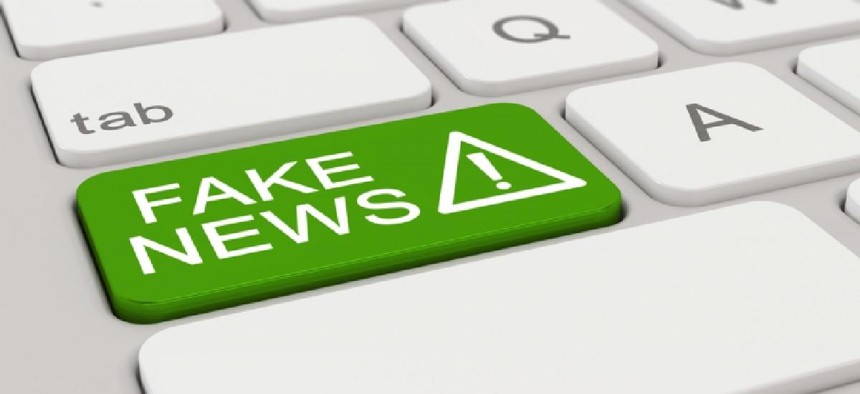Infrastructure
‘Fake News’ is old hat in American politics

Marog - Shutterstock
One of my old editors had a maxim that went like this: There are no new stories, only new reporters.
I thought of that when reading about the explosion of stories about fake news across the internet.
Fake news may be using different pipelines to reach consumers, but it has a long and rich tradition in America, dating back to the earliest days of the Republic. The press, which in those days was strictly partisan, would run scurrilous and false stories about politicians. In fact, newspapers had to rely on the political parties for financial support since these were the days before advertising.
Today, fake news is often produced by partisan websites, but non-partisan entrepreneurs have no qualms about posting the stuff to get hits that generate advertising. It’s a low and cynical practice.
As a reporter, I can think of three instances where I ran across fake news. One was in 2002, when Democratic U.S. Rep. Joe Hoeffel was running against Republican Melissa Brown for a district that included Northeast Philadelphia and parts of Montgomery County.
A week or so before the election, an item appeared on the Politics PA website that said that the Rev. Al Sharpton had endorsed Hoeffel for re-election. I forget the exact wording, but it included a warm verbal embrace from Sharpton and an equally warm thanks from Hoeffel.
Later, copies of the endorsement were circulated in Hoeffel’s district, targeting mostly white areas where voters would not think kindly of a black activist like Rev. Sharpton.
The news release was fake. Sharpton had never endorsed Hoeffel and Hoeffel had never sought his endorsement.
Clearly, it was a ploy to set Hoeffel up. Who did it? To this day, no one knows. But my rule of thumb is: if a hit piece is set loose upon the world you can assume it was done by the opposition candidate. Who else would do it?
To reach back further, in the 1980s there was a publication known as the Liquor Observer, a weekly tabloid circulated among those who sold beer, wine and spirits. Wrapped around the outside of this trade paper was a one-page publication called the Pennsylvania Observer, which ran political stories.
The stories never carried bylines and often had an odd ring to them. An example would be an article with a headline that read, “Sen. Smith Seen As Strong Gov. Candidate,” followed by text that said, in so many words: Sen. John Smith is enjoying a surge of support around the state for his possible run for the Republican nomination for governor, with county chairmen and local officeholders urging him to enter the field.
It was fake. The story was planted by the Smith campaign, likely for a fee. To those who knew politics, the article seemed ludicrous, an obvious plant. But, as a campaign aide once explained to me, a story that looks ridiculous to a political reporter in Philadelphia may seem real to an editorial writer in Altoona who was sent a copy of it by the candidate’s campaign. The fact that it was from a Philadelphia paper added credence to the ploy.
Going back even further, to the 1970s, there was a reporter in Harrisburg named Mason Dennison who wrote a three-times-a-week column called “The Pennsylvania Story” that was syndicated to several dozen newspapers around the state.
I was a reporter in Harrisburg at the time and thought it odd that in the four years I had been working in the Capitol I had never seen Dennison: not the Capitol Newsroom, nor in the House or Senate chambers – not even at a governor’s news conference. There were older reporters who said they knew “Reds,” as he was called, but they also had not seen him in years.
I began pecking at a story to answer the question: Exactly who is Mason Dennison? I ran into a guy named Bill Greenlee, later a lobbyist, who had recently returned to work for the Republicans in the legislature. Greenlee told me point-blank that Dennison wrote few, if any, of his columns. Instead, he relied upon the public relations people on the Hill to write columns for him.
That helped explain an odd aspect of Dennison’s columns. The one on Monday would praise then-Gov. Milton Shapp to the high heavens as a brilliant leader, yet the one on Friday would call out Shapp as a fool and a liar. Why this schizoid approach?
One day, Greenlee came to the Capitol Newsroom and handed me a sealed envelope with instructions not to open it until he called me. A week or so later, he did. Inside the envelope was a piece about a famous Swedish pollster called Swen Parc, who had been brought in by Republicans to sound out voter sentiments.
Recall that this was during the Watergate era, after the resignation of President Nixon. Yet, Parc reported that 1976 was shaping up to be a great year for Republicans, who enjoyed strong support among voters.
Now, go look at Dennison’s column, Greenlee said. When I did, I found that his column was about Swen Parc and it read nearly word for word what Greenlee had written.
It was fake. Greenlee had made it up. There was no Swedish pollster.
"Swen Parc" is "crap news" spelled backward.
I called other PR men on the Hill, most of whom fessed up to writing columns for Dennison. One even recalled Dennison calling him to say he was going on vacation and asking the PR guy to send a couple of columns “for the can.”
I called Dennison and asked him about the scam. He was not amused and threatened to sue me for libel. He was even less amused when the story ran in The Inquirer.
At this point, I should be clear: Every word of this column is true.
NEXT STORY: The property tax elimination fallacy
